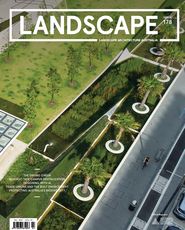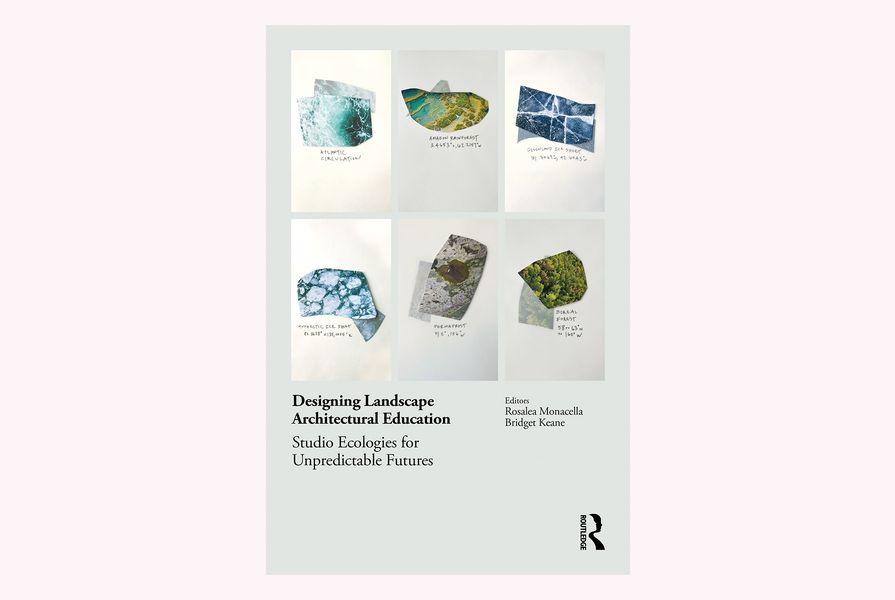Back in 1973, in an article entitled “Resilience and Stability of Ecological Systems,” the Canadian ecologist C. S. Holling seminally contrasted urban infrastructure’s engineered fail-safe intentions with ecology’s safe-to-fail “unpredictability.” Fifty years later, with the planet increasingly in the throes of climate emergency and biodiversity crisis, his prescience is haunting the disciplinarity of landscape architects. If we don’t know what the future holds, the discipline surely has a problem speculating on designed infrastructural “solutions” with certainty. Which creates another dilemma, this one for the academy: how could a new generation of landscape architects be trained by, for and with unpredictability?
At about the same time as Holling published his hypothesis, when landscape architecture was a nascent profession in Australia, a calling for formal recognition of the discipline emerged. Practitioners and academics responded by establishing courses across the country, all of which continue to grow and develop. But in the decades after these programs’ inceptions, the sharing of ideas between practice and academy waned. While the academy, and some emerging practices, grappled with the zeitgeists of Modernism, Postmodernism, Landscape Urbanism and Ecological Urbanism, much of professional practice learnt to stand up without any academic props by doing innovative, urban-integrated work that demonstrated creative streaks in problem solving. In doing so, professional practices, like their public and private clients, tended towards evidence-based, risk-averse, fail-safe production. Which, of course, is the antithesis of Holling’s unpredictable ecological resilience. The current “mess,” as George Monbiot describes today’s state of planetary crises, leaves no room for not addressing unpredictability. As Anya Domlesky writes in Designing Landscape Architectural Education, professional practice needs, first, a commitment to do practice-based research and, second, the foresight to initiate design experimentation. But, for many practices in our risk-averse world, research and experimentation are risky. This may, therefore, be a moment to rekindle a collaboration with the academy.
Domlesky’s contribution is one of more than 30 studio case studies collated by Rosalea Monacella and Bridget Keane that address the paradox of education: creating knowledge and skills to design an unpredictable future. Not surprisingly, Designing Landscape Architectural Education veers away from solutions and ideologies: the book is not a manifesto, nor an edict on design, nor a glossy coffee table book. Instead, it rigorously and profoundly highlights themes that are intent on opening possibilities for design practice. One theme looks at new ways to appreciate and represent materials and ecologies to go beyond an anatomical analysis, to situate oneself as part of the ecosystem, to garner awareness of the anthropogenic and the post-human world. On the basis that we need to make obsolete the tools and techniques that disrupted the planet’s ecosystems, another explores novel approaches to site-based cartographic drawing, and design methods with the potential to disrupt what we take now as normal. New technologies offer new potential for seeing site, making previously unthought-of connections between scales, and encountering and sensing landscape. In the expanded field, transdisciplinarity entangles ecology and politics with human and not-human agency. Each of these themes gains breadth through six or seven case studies. In each, design is wary of the solution of “solutions”, more intent on the potential of being interactive, tightening and loosening the ecologies of landscape. The possibilities are new, adventurous, even daring; but, the editors remind us, they only have potential if professional designers have an ethical underpinning to discard deleterious practices, regardless of how professionally successful they might still be.
Notwithstanding the intrigue of the thematizing, the drawcard is in the detail: the studio work itself, directed by leading landscape thinkers. The offerings are broad and diverse, elevating the work beyond traditional disciplinary boundaries. Sand extraction dioramas, “Anthropocentric Chambers,” “exceptional waters mapping”, metropolis flow simulations, climate fictions, infrastructural transitions and “dumb materials” are only the tip of the richness and depth of student drawing, thinking and synthesizing that these educational studios are uncovering. The work re-examines the notion of site, the beyond-site, the self-organizing fluidity of material, and the way we use language and representations. It offers the potential for landscape architecture practice to make a difference, through the research and experimentation capacity of landscape architecture academies.
It is coincidental that, at almost the same time but in another part of the world, two German professors, Diedrich Bruns and Stefanie Hennecke, have edited and published a similarly weighty book entitled The Routledge Handbook of Landscape Architecture Education. Part survey, part narrative, their book (with contributions from a more widespread cast) maps the extraordinary reach of landscape architecture education in less than a century, describing its evolution from “professional introspection to interdisciplinary research.” The concurrent emergence of two such in-depth education-focused books is striking; it could be that the time is ripe for a discussion on education that is not just academic. It may be the moment to review, and to reflect on, the role of the academy in the practice of landscape architecture.
In Australia, more and more landscape professional practices care about climate change, value a connection to Country and acknowledge the importance of subverting the biodiversity crisis. There is a latency in the studio work collated by Monacella and Keane that should intrigue practitioners, and increase the potential for everyday practice to experiment with alternative skills and knowledge systems; to deploy agility with new tools and techniques; to persuade stakeholders that landscape design outcomes are not really about solutions but more about what Doreen Massey, in For Space, called place-based “trajectories”1; and, above all else, to implore a much-needed new ethic that provokes a re-prioritization of client briefs, landscape architects’ responses and builders’ implementation processes. It is a challenge for this neoliberal world to practice in the precepts of uncertainty of experimentation, and to educate and to re-educate landscape architects accordingly. And it will be surprisingly apt that unpredictability may reunite practice and the academy.
Designing Landscape Architectural Education: Studio Ecologies for Unpredictable Futures. Edited by Rosalea Monacella and Bridget Keane, Routledge, 2023.
1.Doreen Massey, For Space (London: SAGE), 2005.
Source

Review
Published online: 10 May 2023
Words:
Martin Bryant
Images:
Supplied
Issue
Landscape Architecture Australia, May 2023












